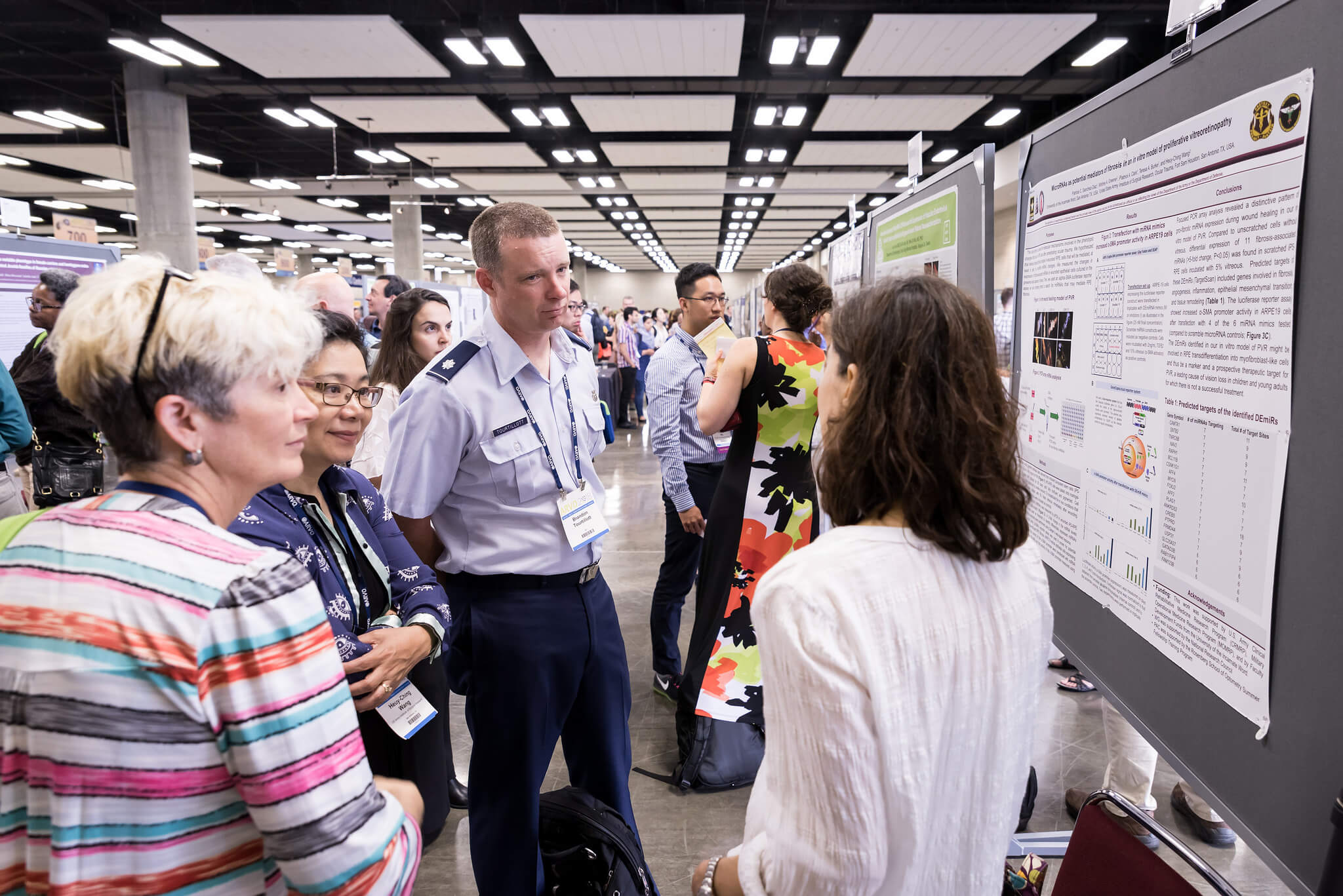Members-in-Training Outstanding Poster Awards

MIT First Authors of the top five (5) scored abstracts scheduled as Poster presentations from each Scientific Section and Cross-sectional Group will be eligible for consideration as award recipients and invited to participate in the virtual MIT Outstanding Poster Award Competition during the Annual Meeting.
One award recipient will be selected from each Scientific Section and Cross-Sectional Group. Award recipients will be announced at the Closing Keynote Session during the Annual Meeting.
To be eligible for the 2022 MIT Outstanding Poster Award
- You must be an ARVO MIT member paid through 2022.
- You must submit an abstract for the 2022 Annual Meeting as First Author.
- As part of your abstract submission process, you must indicate that you want to apply for the MIT Outstanding Poster Award.
- You may apply for the MIT Outstanding Poster Award, a Travel Grant, and the Alcon Award.
- Your abstract must be accepted for Poster presentation at the 2022 Annual Meeting.
- Your abstract must receive one of the top five (5) review scores given by the reviewing Scientific Section or Cross-sectional Group to MIT First Authors who have applied for the award and whose abstracts have been accepted as Poster presentations.
- Eligibility Acknowledgements will be sent to the First Authors of the top five scores from each Section/Group by Friday, April 1, 2022.
- Eligible First Authors must accept their eligibility and confirm their participation in the virtual judging session.
Congratulations to the 2021 winners of the MIT Poster Award Contest:
Annechien E.G. Haarman (AP)
Variable threshold burden style rare-variant tests identify novel genes associated with refractive error in a large multi-ancestry cohort
Ailis Moran (BI)
Deciphering the role of Rab28 in cone vision and outer segment phagocytosis
Clair Enthoven (CL)
Gender predisposition to myopia shifts to girls in the young generation.
Raji Shyam (CO)
Mitochondrial ROS leads to lysosomal dysfunction and autophagy impairment in an animal model of Congenital Hereditary Endothelial Dystrophy
Louise Mesentier-Louro (EY)
Immunoprofiling of Nonarteritic Anterior Ischemic Optic Neuropathy
Benjamin McClinton (GEN)
Using Oxford Nanopore long-range sequencing to phase ABCA4
Deborah Villafranca-Baughman (GL)
Glia-derived S100ß promotes pericyte-mediated capillary constriction and reduced blood flow in glaucomatous and ischemic retinas
Poonam Naik (IM)
Differential Transcriptome and modulated gene profile associated with Multi-Drug Resistant (MDR) Pseudomonas aeruginosa endophthalmitis in a mouse model
Raphaelle Denis (LE)
Unintended Placement of Intraocular Lens Haptics in the Sulcus and Association with Posterior Capsular Opacification
Miriam Stolwijk (LV)
Characteristics and healthcare utilization among patients of low vision services: a retrospective population-based descriptive study with healthcare claims
Pedro Mecê (MOI)
Adaptive-glasses Full-Field OCT for high-resolution retinal imaging over a large field-of-view
Sai Bo Bo Tun (PH)
Local dexamethasone treatment to maintain allogeneic islet grafts in the Anterior Chamber of the Eye (ACE)
Hanmeng Zhang (RC)
rAAV-mediated ASAH1 overexpression prevents retinal degeneration in Farber disease
Philipp Mueller (RE)
Prevalence and Associations of Dome-Shape Macular Configuration – A Macular Curvature Study on UK Biobank data
John Vanston (VI)
Influence of stimulus size, intensity, & natural eye motion on small-field color perception
Andrew Boal (VN)
Astrocyte Gap Junction Protein Cx43 Modulates the Light Response of Mouse Retinal Ganglion Cells
